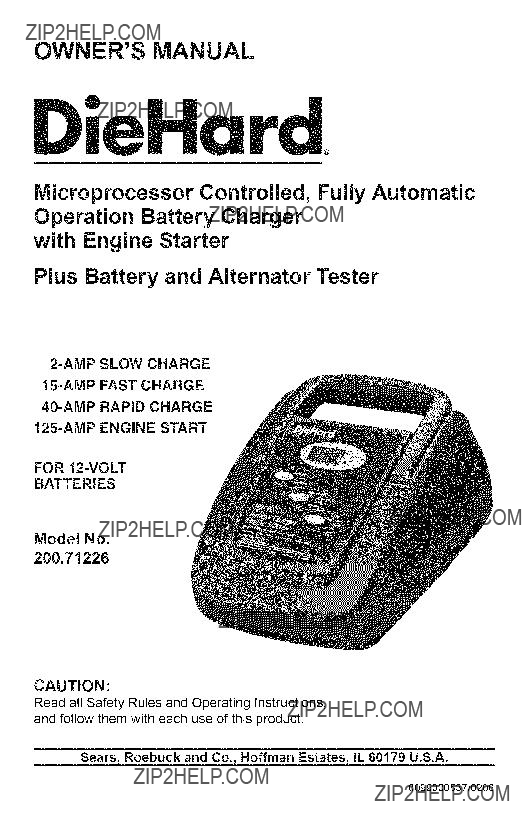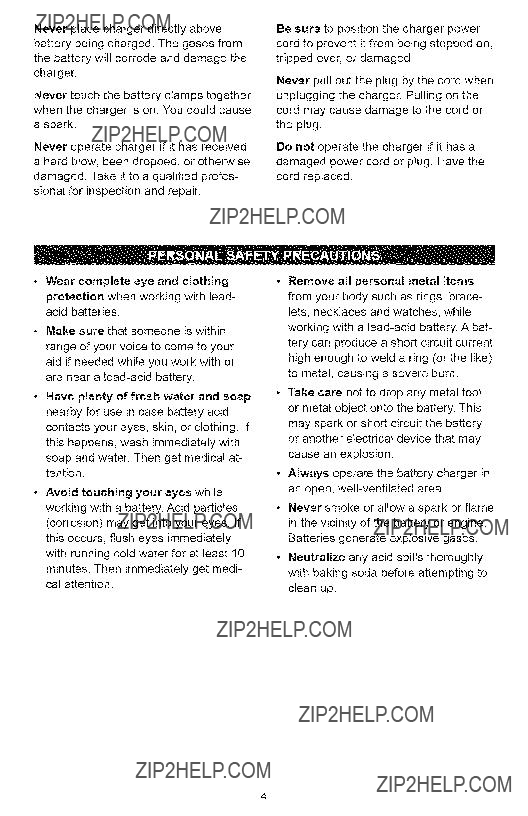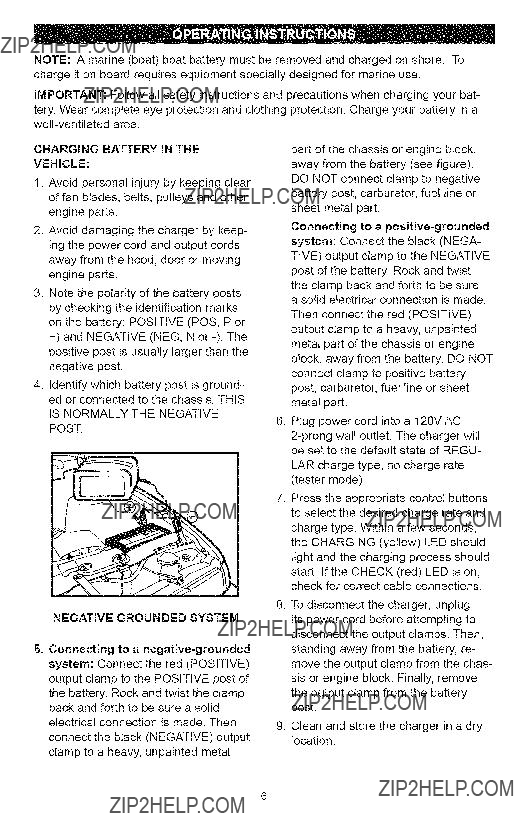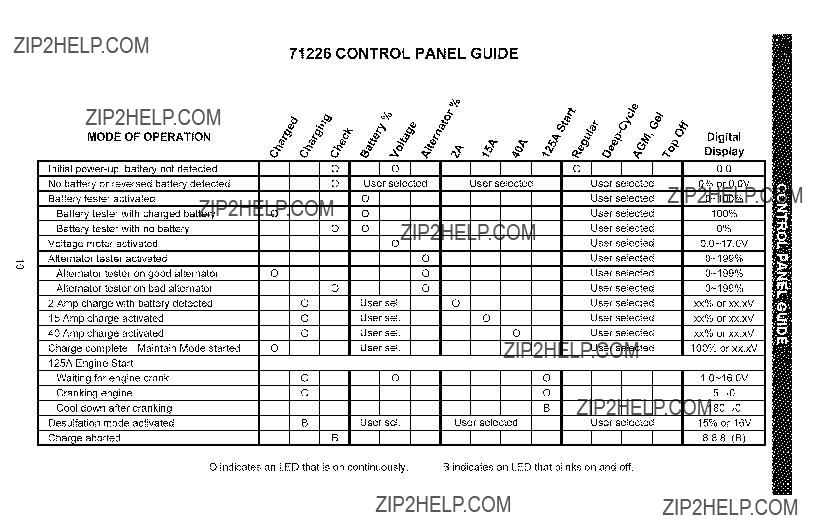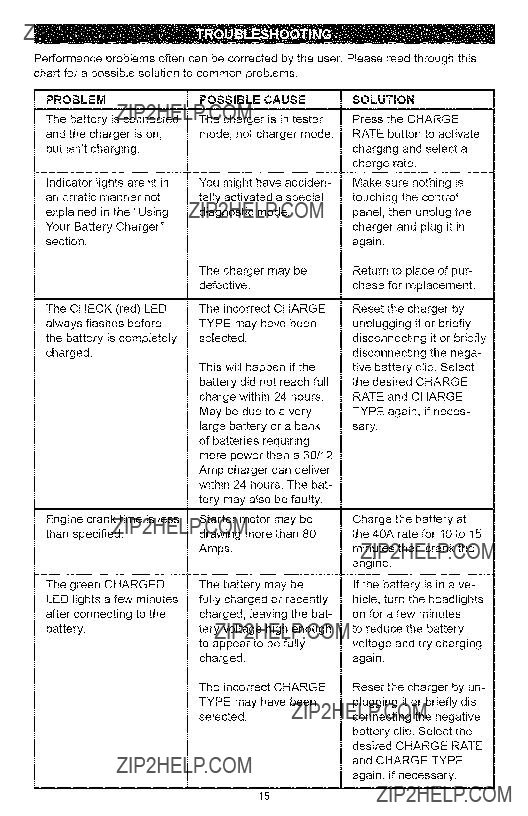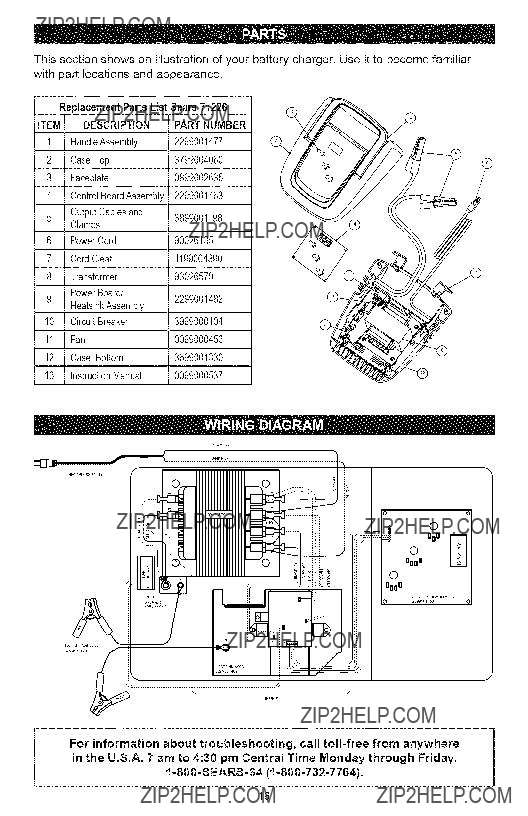OVERVIEW
This battery charger has a built-in battery tester that displays either an accurate battery voltage or an estimate of the battery's relative charge based on the battery voltage and the Battery Council International scale.
TESTING SEQUENCE
There are four basic steps required to use the 71226 as a battery tester.
1.Connect the charger battery clamps to the battery. Be sure to follow all of the precautions listed under "OPERATING
INSTRUCTIONS".
2.Connect the charger power cord to a 120V AC 2-prong walt outlet. Again, be sure to follow all of the precautions listed under "OPERATING INSTRUC- TIONS".
3.If necessary, press the BATTERY
TYPE button until the correct type is indicated.
4.Read the voltage on the digital display or press the display mode button to set the tester to BATTERY % and read the battery percent.
TESTER AND CHARGER
When first turned on, the 71226 oper- ates only as a tester, not as a charger. To continue to use it as only a tester, avoid pressing the CHARGE RATE switch but- ton. Selecting a charge rate activates the battery charger and deactivates the tester. Pressing the CHARGE RATE button when the 125A Start LED is lit (except during the 180 second cool down) will shut off the charger and activate the tester.
POWER=UP IDLE TIME LIMIT
If no switch button is pressed within 15 minutes after the charger is first powered up, the charger will automatically switch from tester to charger, if a battery is connected. In that case, the charger will be set for the 2A charge rate and 12V REGULAR charge type.
TESTER WITHOUT TIME LIMIT
If either the DISPLAY MODE or CHARGE TYPE button is pressed within the first ten minutes after the charger is
11
powered up, the charger wilt remain a tester (not a charger) indefinitely, unless a charge rate is selected,
TESTING AFTER CHARGING
After the charger has been changed from tester to charger (by selecting a charge rate), it remains a charger. To change
the charger back to a tester, press the CHARGE RATE switch until all CHARGE
RATE LEDs are OFF.
TESTER STATUS LEDs
When the 71226 is operating as a bat- tery tester, the status LEDs light under the following conditions:
???The CHARGED (green) LED will light if a charged battery is tested.
???The CHARGING (yellow) LED does not light in the battery test mode.
???The CHECK (red) LED lights unless a properly connected battery is detected.
???When the tester display mode is set to VOLTAGE, the CHARGED and CHARG- ING LEDs won't light.
INITIAL PERCENT CALCULATION
When a battery % is calculated for the first time after connecting a battery, the digital display will show three dashes
("---") for a period as tong as several seconds while the tester analyzes the battery.
NOTES FOR TESTING BATTERY %
A recently charged battery could have a temporarily high voltage due to what is known as "surface charge". The volt- age of such a battery will gradually drop during the period immediately after
the charging system is disengaged. Consequently, the tester could display inconsistent values for such a battery. For a more accurate reading, the surface charge should be removed by temporar- ily creating a load on the battery, such as by turning on lights or other accessories.
The battery % ranges from 0 to 100.
The battery tester is only designed to test batteries. Testing a device with a rapidly changing voltage could yield unexpected or inaccurate results.
